European Settlers Come to America
Today’s post is the final one in a series addressing a list of great questions from a homeschooling mama who wanted to know the political perspective of our American history for students in middle school and junior high. Below are excerpts from America the Beautiful concerning the first known European explorers who came to America.
Ponce de León Lands in Florida
Spanish kings and queens continued to appoint governors to rule over Spanish colonies in the New World. When Columbus sailed on his second voyage in 1493, 33-year-old Juan Ponce de León came with him. Ponce de León later served as governor of Puerto Rico.
Islanders [whom the Spanish met in the Caribbean] told stories about Bimini. They said that Bimini was north of Cuba. They said that this island had a fountain of youth which could make people young again. Ponce de León believed the stories and asked the Spanish king for permission to find Bimini. He intended to conquer the island and begin a colony.
Ponce de León sailed north. On Easter Sunday, March 27, 1513, he saw land. He thought he had found an island, but he had actually discovered the Florida peninsula of North America. Ponce de León and his crew landed in Florida on April 2, 1513, during the Easter holiday season. He named the land Florida. The Spanish call Easter Pascua Florida, which means “flowery festival.” Ponce de León and his crew tried to sail around the “island,” but of course they could not, since Florida is actually a peninsula. Ponce de León and his men returned to Puerto Rico in September.
Eight years later, in 1521, Ponce de León took 200 people to form a colony on the west coast of Florida. Members of the Calusa Nation attacked the group and wounded Ponce de León. He and the colonists left Florida and sailed to Cuba. Ponce de León died there.
Hernando de Soto Explores the Southeast
Hernando de Soto was born in Spain around 1500. He sailed to Central America when he was about 14 years old. At first he worked for the governor. Later, he explored Central America. When De Soto was about 30 years old, he traveled to Peru in South America with the Spanish conquistador Francisco Pizarro. While in Peru, De Soto and other Spaniards conquered the Inca Empire and took its treasures.
In 1537 Charles V, king of Spain, made De Soto governor of Cuba and Florida. Two years later, De Soto and an army of over 600 men landed on the western coast of Florida. They marched up the coast. The descendants of pigs De Soto brought for food still live in the wild in Florida. For four years, De Soto and his army marched 4,000 miles through the southeast area of North America searching for treasure. They met many Southeast nations. The army crossed the Savannah and Ocmulgee Rivers in what is now Georgia. The Spaniards went into South Carolina and then explored in the Appalachian Mountains of North Carolina and Tennessee. They turned south and crossed present-day Alabama. They probably passed through northern Mississippi.
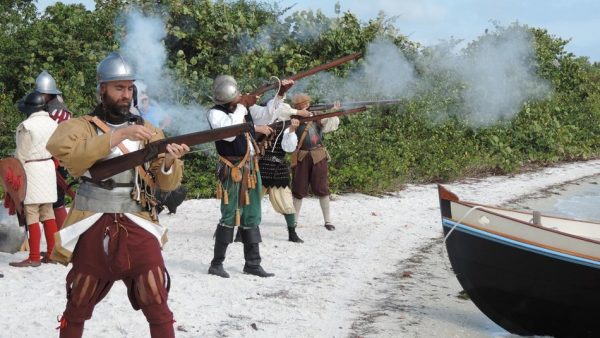
Hernando de Soto and his army became the first known Europeans to cross the Mississippi River. They probably sighted it near what is now Memphis, Tennessee. The explorers then crossed the river into the area that is now Arkansas. They entered present-day Texas and Oklahoma before turning back to the east.
When they again reached the Mississippi River, Hernando de Soto died of a fever almost exactly four years after the expedition began. His remaining soldiers built barges and floated down the Mississippi River. They entered the Gulf of Mexico and went on to Mexico.
Francisco Vásquez de Coronado Explores the Southwest
While Hernando de Soto and his men explored the Southeast, Spanish conquistador Francisco Vásquez de Coronado explored in the Southwest. Coronado had heard a legend about Seven Cities of Cibola, which were supposedly filled with gold. Beginning in 1540, Coronado led his men on a quest to find them. When they found the Zuni Nation [one of the Pueblo nations] living in six or seven villages, Coronado thought perhaps he had found them. He was disappointed when they were not filled with gold. Zuni still live on the site of one of those villages.
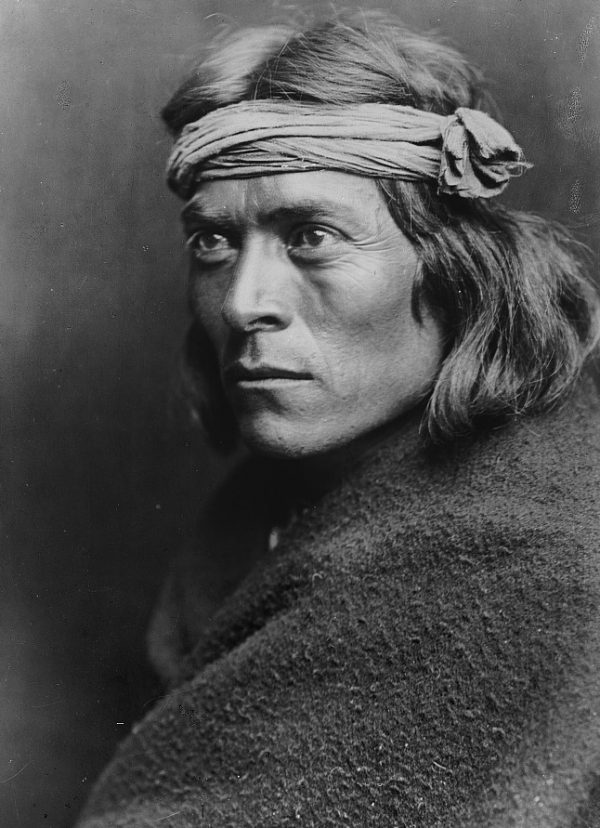
Coronado continued to explore the Southwest, but he never found the cities of gold. Soon Spanish traders and missionaries came into the area. Again and again Spaniards searched for treasure. Jesus said:
Do not store up for yourselves treasures on earth,
where moth and rust destroy, and where thieves break in and steal.
But store up for yourselves treasures in heaven,
where neither moth nor rust destroys,
and where thieves do not break in or steal;
for where your treasure is, there your heart will be also.
Matthew 6:19-21
French Huguenots Come to America for Religious Freedom
The gold and other goods the Spanish brought home from the New World made the country wealthy. Spain became the most powerful country in the world. Soon other Europeans came to America in search of treasure.

In 1524, several years after Ponce de León had set foot in Florida and several years before De Soto explored the Southeast and Coronado explored the Southwest, King Francis I of France sent Giovanni da Verrazano in search of China. Verrazano was Italian. He landed first in North Carolina. From there he sailed north along the coast of North America all the way to Newfoundland, where Vikings had lived over 500 years before.
Ten years later in 1534, King Francis I sent Jacques Cartier to North America, where he explored the area north of Maine. Cartier returned the following year. This time he discovered the St. Lawrence River, which is now part of the border between Canada and the United States.
In 1562 sea captain Jean Ribault left France with 150 men to explore along the coastline that Verrazano had explored. The Spanish had recently made a decision not to build any settlements in North America, but only in Central and South America. If Ribault’s voyage went well, French settlers would return to begin a permanent settlement.
In the early 1500s, the Catholic monk and priest Martin Luther of Germany began to question certain teachings of the Roman Catholic Church. Other religious leaders did also. Their teachings spread across Europe. Many believers left the Catholic Church. This religious movement is called the Protestant Reformation. Catholic leaders sometimes persecuted Protestants. Huguenots were French Protestants. Ribault and most of those who traveled with him were Huguenots. The Huguenots hoped for religious freedom in America.
Early in the morning of April 30, 1562, Ribault and his crew anchored their ships near present-day St. Augustine, Florida. That afternoon the ships sailed north until they saw the mouth of the St. Johns River. The next day members of the Timucua Nation watched them from the shore. They showed them where to land their boats. Women and children brought evergreen branches and spread them out on the sand. Then their chief visited with Ribault and the crew.
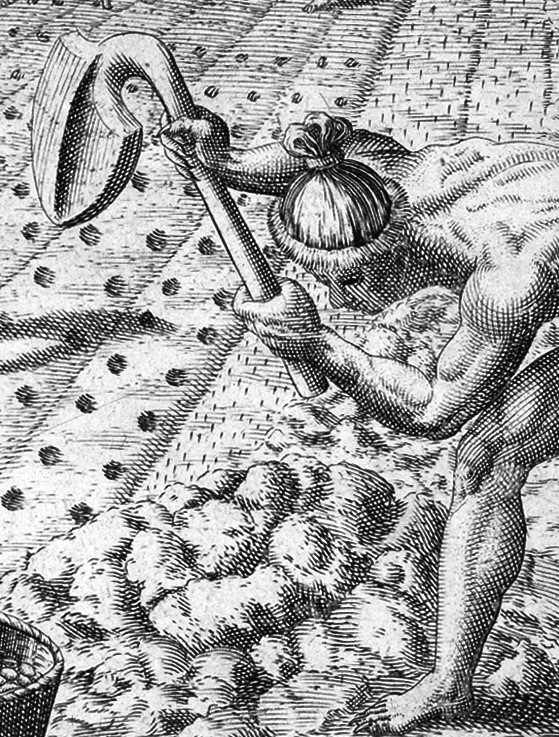
French Huguenots and sea captain Ribault continued north until he reached what is now Parris Island in Port Royal Sound in what would later become South Carolina. Ribault left about 25 men there to establish Charlesfort, the first French settlement in North America. He intended to come back to bring them supplies, but a civil war in France prevented this. Local people helped the men build a boat. They used pine resin and Spanish moss to seal its seams and made sails from shirts and sheets. One settler decided to stay, but the other settlers sailed away. Amazingly, the boat made it almost to France. The crew of an English ship rescued the struggling passengers. Spanish settlers later captured the one settler who had stayed behind.
In 1564 Huguenot leaders sent more ships to America. René de Laudonnière, a nobleman who had sailed with Ribault, led a fleet of three ships with 300 people onboard. Laudonnière led the settlers as they built a fort and settlement at the mouth of the St. Johns River. The Timucua assisted them. Laudonnière named the settlement La Caroline after the French King Charles IX. The following year Jean Ribault returned with 600 more settlers, including soldiers, laborers, women, and children.
St. Augustine, the Oldest Permanent City That Europeans Founded in America
By this time, Spain was shipping gold and silver from Mexico and Peru to Europe. The Spanish resented the French for building a settlement on the Florida coast. They feared that French raiders might be hiding at the fort at La Caroline in order to attack Spanish ships and steal their treasures. In 1565 Spain changed its policy about settlements in North America. Spain sent Admiral Don Pedro Menéndez de Avilés to establish a permanent Spanish settlement in Florida and to remove the French from La Caroline.
Menéndez brought 800 soldiers and colonists. They arrived in Florida on August 28, 1565, just a few days after Ribault arrived at La Caroline. Menéndez named their colony St. Augustine because August 28 is St. Augustine’s feast day.
Jean Ribault tried to protect La Caroline, but Menéndez attacked the fort and defeated them. Menéndez led the new Spanish colony, explored the nearby area, and began Catholic missions among the Timucua. In 1572 the Spanish colonists moved St. Augustine to its present location. St. Augustine became the center of Spanish power in North America. The colony was important to Spain for three reasons. Its soldiers guarded the route of Spanish treasure ships. The city was a refuge for people who survived shipwrecks. Residents also rescued cargoes from wrecked ships.

The Pueblo people of the Southwest have older permanent communities. St. Augustine is the oldest permanent city that Europeans founded in America. The people of St. Augustine built a stone fortress to guard their city. The Bible teaches that God is our rock and our fortress.
The Lord is my rock and my fortress and my deliverer,
My God, my rock, in whom I take refuge;
My shield and the horn of my salvation, my stronghold.
Psalm 18:2
English Explorers and Settlers in America
Italian John Cabot moved to the seaport city of Bristol, England, around 1488. Just four years before Columbus sailed west to find a route to the Indies, Cabot was thinking about the same idea. In 1493 the news of Columbus’ discoveries in the New World reached England. Businessmen in Bristol agreed to sponsor Cabot on a venture to the Indies. England’s King Henry VII authorized the expedition. In 1497 Cabot and a crew of 18 sailed west from Bristol on the Matthew. They landed in what is now Canada, perhaps on Cape Breton Island. They sailed along the coasts of Newfoundland and Labrador and along the northeast coast of what is now the United States. Cabot claimed these lands for England.
King Henry VIII’s daughter Elizabeth I came to the throne in 1558. Elizabeth reigned until 1603. She encouraged settlers to move to America. Since she never married, her subjects called her the Virgin Queen. The English began to call a large portion of the land near the Atlantic coast Virginia in Elizabeth’s honor.
In 1587 English noble Sir Walter Raleigh sponsored a group of English men, women, and children to settle in America. That July about 100 colonists landed at Roanoke Island, off the coast of present-day North Carolina (at that time the English called it Virginia). The Roanoke Nation also lived in the area. The settlers built a fort on the island.
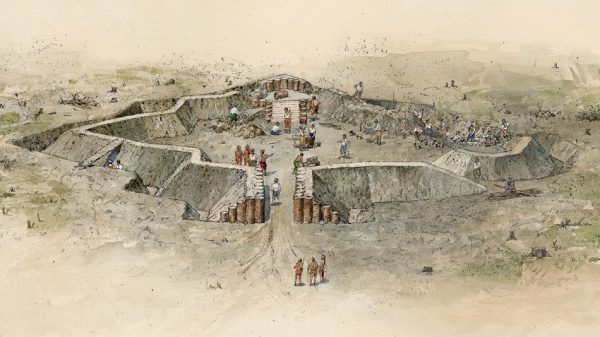
John White served as the governor of Roanoke. On August 18, about a month after they arrived, Ananias Dare and his wife Elinor had a baby girl. Virginia Dare was the first child of English parents to be born in America. Elinor Dare was John White’s daughter. Just nine days later, White left the settlers on the island and returned to England to bring back supplies.
England and Spain did not get along. The Spanish Armada was the most powerful navy in the world. In 1588 Spain tried to destroy the English fleet, but instead the English defeated the Spanish Armada. Spain was no longer as powerful in Europe or in North and South America. Defeating Spain gave England an opportunity to do more in the New World. However, the war kept John White from being able to return to Roanoke until 1590. When White returned, the settlers and their houses had disappeared. The only evidence he found were the letters CRO carved on a tree and the word Croatoan carved on a post of their wooden palisade. White knew that the Croatoan people were a friendly nation who lived near the settlement, but the clues did not help White solve the mystery. What happened to the settlers remains a mystery.
After the death of Queen Elizabeth I, King James VI of Scotland became King James I of England. James was the king who authorized the translation of the Bible known as the King James Bible. In 1606 a group of London businessmen formed the Virginia Company and obtained an official document, called a charter, from King James. Later that year, the company sent three ships to America. The ships brought only men and boys. The Virginia Company instructed the men to make a settlement, find gold, find a water route to the East Indies, and convert native nations to Christianity.
On May 14, 1607, these English settlers landed in Virginia near a river. They named the river the James River after their king. The settlers honored their king again by naming their new community Jamestown. Native nations sometimes attacked the town. At other times, they brought food to exchange for copper and iron tools. The food they supplied helped the colony survive. English settlers built other villages along the James River.
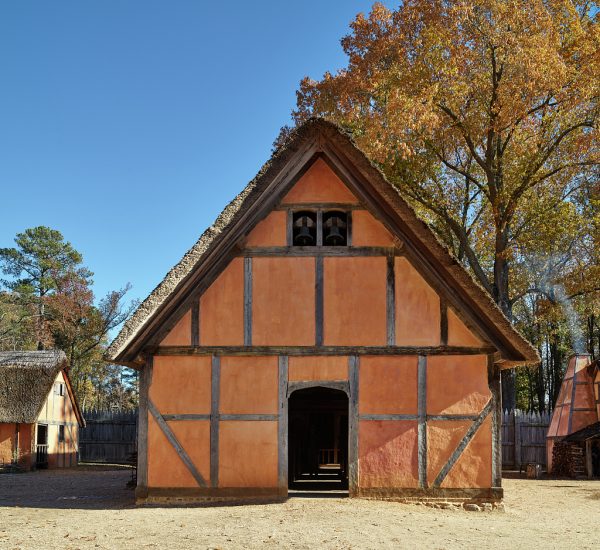
Slavery was a common practice in many parts of the world in the 1500s and 1600s, as it had been for centuries. In the early years of English settlement in America, a person could choose to become an indentured servant for a certain length of time, often for seven years. Afterwards, he became free. The person whom he had served usually gave him or her land and supplies to begin a farm. Many English men and women came to Virginia as indentured servants in the years after this.
Settler John Rolfe wrote that a Dutch ship arrived at Jamestown in August 1619. On board were enslaved Africans. Rolfe wrote that the settlers exchanged food for these Africans. The settlers may not have considered these people as their property, but rather as indentured servants. However, over time Virginians came to see enslaved Africans as property. They began to practice hereditary slavery, in which children born to enslaved people were considered slaves at birth. Enslavement continued generation after generation.
In the Sermon on the Mount, Jesus taught us how to treat other people. Slavery is a tragic example of people not obeying the words that Jesus spoke that day.
In everything, therefore,
treat people the same way you want them to treat you,
for this is the Law and the Prophets.
Matthew 7:12

